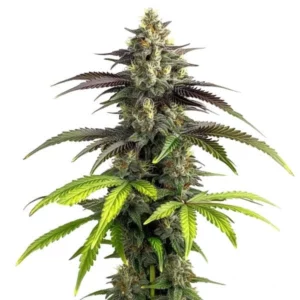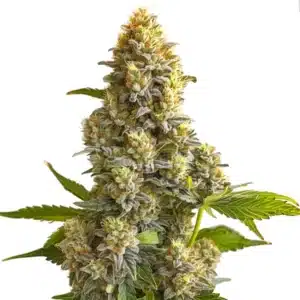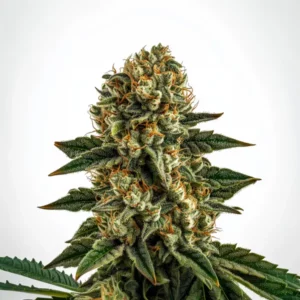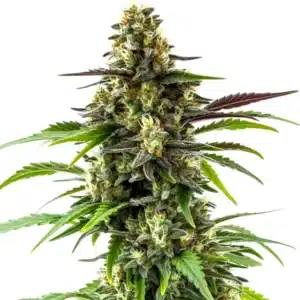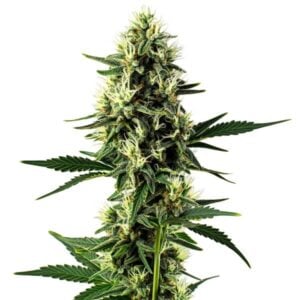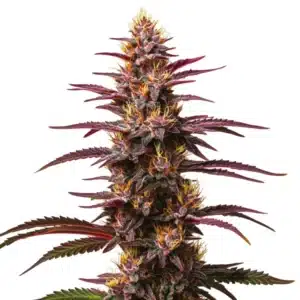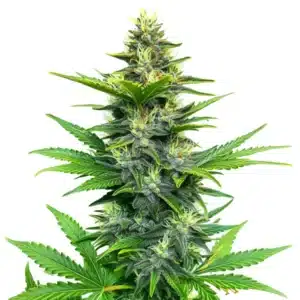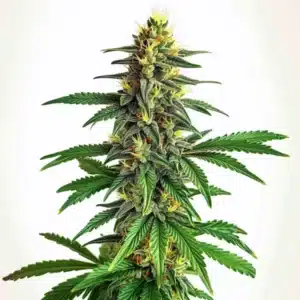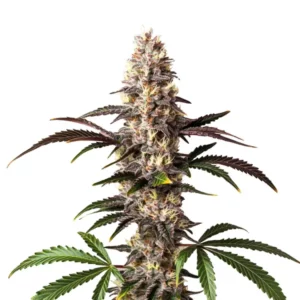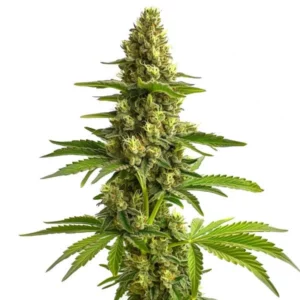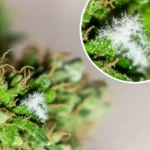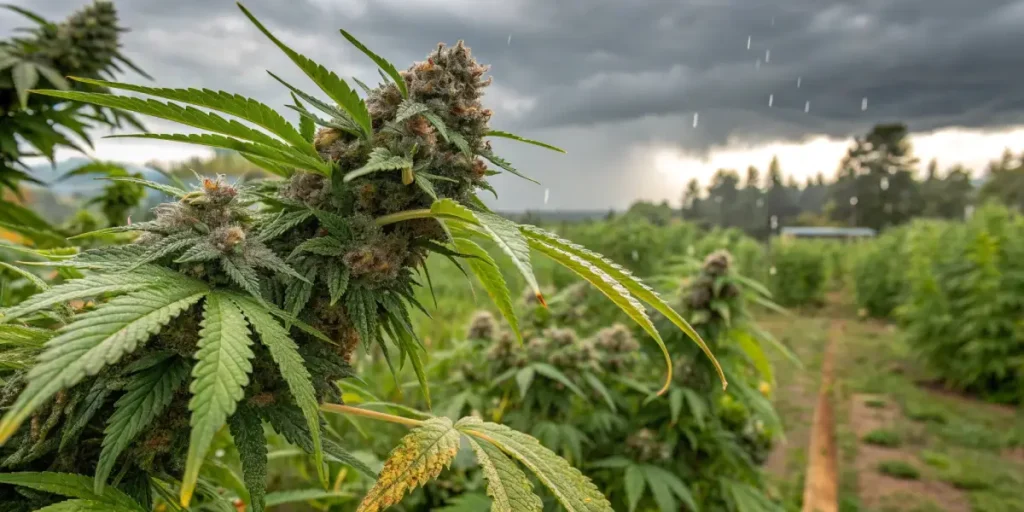
How to Prevent Bud Rot Outdoors
Outdoor Bud Rot
What is Bud Rot? and How to Prevent Bud Rot Outdoors
Bud rot is a fungal infection that damages the buds of cannabis plants, causing them to darken and decay if left unchecked. It often appears as a water-soaked spot that eventually turns brown and soft. Many growers ask, “how to prevent bud rot outdoors” by applying simple measures. This infection can spread rapidly in humid outdoor settings, so knowing its signs is key to keeping your plants safe and your harvest intact.
In outdoor settings, factors such as moisture, poor airflow, and high humidity create an ideal environment for bud rot. Weather changes and rain contribute to damp conditions that foster this fungus. Gardeners can reduce risk by adjusting their practices and monitoring plant health carefully. Employing strategies on how to prevent bud rot outdoors can lead to a healthier crop and improved yields while keeping unwanted infections at bay.
Recommended Strains
Bruce Banner 2.0
|
|
THC | 25% - 30% (High) |
|
|
Type | Feminized |
|
|
Yield | Medium |
|
|
Phenotype | 35% Indica / 65% Sativa |
Bruce Banner Autoflower
|
|
THC | 21% - 26% (Medium) |
|
|
Type | Autoflowering |
|
|
Yield | High |
|
|
Phenotype | 30% Indica / 70% Sativa |
Promos & Deals
Selecting Resistant Strains for Outdoor Growth
Characteristics of Resilient Cannabis Strains: How to Prevent Bud Rot Outdoors
Some cannabis strains naturally resist bud rot due to their robust structure and dense, resinous buds. These strains have thicker leaves and sturdier branches that allow them to shed excess moisture. When searching for advice on how to prevent bud rot outdoors, selecting a resilient strain is an important step. By choosing varieties known for their hardiness, you give your garden a better chance of withstanding humid conditions and fungal threats.
Varieties recommended by experienced growers often show lower rates of infection in damp climates. Seed banks provide detailed descriptions of strain characteristics that help in the selection process. Using these resilient strains reduces risk and supports overall plant health in outdoor gardens. Integrating these selections into your plan is a reliable way on how to prevent bud rot outdoors while achieving a productive harvest season.
Optimizing Outdoor Growing Conditions
Ensuring Proper Spacing and Air Circulation: How to Prevent Bud Rot Outdoors
Proper spacing between plants is essential for improving airflow and reducing moisture buildup. When plants are crowded, humidity can become trapped, providing a perfect setting for bud rot. Arranging your garden with enough distance allows the wind to dry leaves quickly and prevents fungal spores from taking hold. This method is one effective answer to how to prevent bud rot outdoors and supports a vibrant and healthy garden environment.
In addition, careful planning of your garden layout helps maintain a natural balance. Using raised beds or strategic row orientation further promotes air movement. These measures ensure that even during rainy periods, the plants remain drier for longer periods. Adopting these spacing and circulation techniques provides a solid defense on how to prevent bud rot outdoors while enhancing overall plant performance.
Managing Humidity and Watering Techniques
Managing humidity is a key factor in reducing the risk of bud rot. Outdoor growers must be cautious with watering schedules, ensuring that water is applied early in the day to allow evaporation before nightfall. Overwatering or watering late can leave plants damp overnight, increasing the chance for fungal infections. Consistent practices on how to prevent bud rot outdoors include using drip irrigation or soaker hoses to control moisture levels efficiently.
Adjusting watering techniques and monitoring weather conditions help maintain ideal humidity around the plants. A steady, controlled watering method prevents excess moisture buildup on buds and leaves. Gardeners who keep a close watch on ambient humidity and adjust their schedules accordingly create a safer environment for their crop. This careful management is a simple yet effective way on how to prevent bud rot outdoors and safeguard your yield.

Preventative Techniques and Maintenance Practices
Regular Pruning and Plant Inspection
Routine pruning removes excess foliage and improves light penetration in the canopy, which is vital for drying the buds. By regularly inspecting your plants for early signs of decay, you can act quickly before bud rot spreads. This hands-on care is one of the best practices on how to prevent bud rot outdoors. Trimming affected areas and thinning out dense growth encourages healthier, more resilient plants that are less likely to harbor fungal infections.
Regular plant inspection also allows you to spot small issues before they escalate into larger problems. Checking the underside of leaves and the base of buds for discoloration or damp spots is essential. Keeping a consistent maintenance schedule supports the overall health of your garden and minimizes risks. These simple steps, combined with vigilant care, offer an effective approach on how to prevent bud rot outdoors in every growing season.
Organic Fungicide Applications and Treatments
Using organic fungicides helps manage early signs of infection without harming beneficial insects. Natural products, such as neem oil or baking soda solutions, can be applied to leaves and buds to create a protective barrier against moisture and fungal growth. Gardeners often ask for tips on how to prevent bud rot outdoors, and organic treatments offer a safe alternative to chemical sprays. These remedies support plant health while reducing the risk of infection in outdoor gardens.
Regular applications during periods of high humidity are essential. Always follow manufacturer instructions for dosage and frequency to ensure effectiveness. When used correctly, organic fungicides form a reliable part of your strategy on how to prevent bud rot outdoors. Integrating these natural treatments with proper garden care leads to a healthier, more resilient crop throughout the season.
Responding to Early Signs of Bud Rot
Recognizing Initial Symptoms: How to Prevent Bud Rot Outdoors and Immediate Actions and Treatment Methods
Early detection of bud rot is vital. Look for tiny water-soaked spots on buds and leaves, which can quickly expand if left untreated. Quick removal of affected parts, along with proper treatment using organic solutions, is essential in managing the spread. By acting fast when you see these symptoms, you reinforce your overall strategy on how to prevent bud rot outdoors. Immediate action protects healthy buds and preserves your overall harvest quality.
Taking swift measures minimizes damage and prevents the fungus from spreading further. Use a clean tool to cut away infected sections and dispose of them safely. This proactive approach is an effective way on how to prevent bud rot outdoors by interrupting the infection cycle. Consistent vigilance in your garden will help keep your plants strong and your yield protected throughout the growing season.
Monitoring and Record Keeping for Outdoor Bud Rot
Keeping Detailed Logs
Maintaining detailed logs of your garden’s conditions is a valuable practice. Recording daily weather, watering times, and any signs of bud rot helps you identify patterns and potential triggers. These logs serve as a useful reference on how to prevent bud rot outdoors by allowing you to adjust your practices based on observed trends. Accurate record keeping supports timely interventions and long-term garden success in outdoor settings.
By documenting plant growth and environmental changes, you can learn which conditions are most risky. Detailed logs make it easier to pinpoint moments when preventive measures are most needed. Over time, this habit becomes a critical tool in managing your outdoor cannabis crop. Consistent record keeping empowers you with insights on how to prevent bud rot outdoors effectively and with confidence.
Analyzing Weather Patterns
Reviewing weather patterns plays an important part in managing bud rot. Rainfall, dew, and high humidity periods can create conditions that favor fungal growth. By analyzing past weather data and predicting upcoming conditions, you can plan interventions on how to prevent bud rot outdoors. This proactive step helps you prepare for times when your plants are most vulnerable and adjust watering or protective measures accordingly.
Careful analysis of weather trends lets you schedule preventive actions ahead of time. Understanding when heavy rain or prolonged humidity is expected means you can act before conditions worsen. This preparedness provides an extra layer of defense against bud rot. In this way, regular weather analysis becomes a simple yet effective method on how to prevent bud rot outdoors while keeping your crop safe.
Soil and Nutrient Management for Bud Rot Prevention
Proper Soil Drainage and Nutrient Balance: How to Prevent Bud Rot Outdoors
Well-draining soil prevents water from lingering around the roots and on the buds, lowering the risk of bud rot. A balanced nutrient supply helps maintain plant strength and resilience against infections. Optimizing soil structure and nutrient levels is a key factor on how to prevent bud rot outdoors. When soil drains properly, excess moisture is reduced, allowing plants to stay drier during humid conditions and decreasing the chance of fungal growth.
Implementing soil amendments and regular testing ensures that your garden has the ideal composition. Adjusting pH and nutrient ratios helps the plants absorb water more effectively, reducing surface dampness. This focus on soil and nutrition supports overall plant health and provides an effective barrier on how to prevent bud rot outdoors. A well-managed soil system is essential for maintaining a thriving outdoor cannabis crop.
Weather Considerations and Their Impact on Bud Rot
Monitoring Rainfall and Dew
Monitoring rainfall and morning dew is essential when managing outdoor cannabis gardens. Wet conditions, even brief periods of moisture, can leave buds susceptible to rot. By keeping a close watch on weather reports and tracking dew patterns, you gain valuable insight on how to prevent bud rot outdoors. Timely adjustments in watering schedules or protective coverings can make a big difference in keeping your plants dry and safe.
Accurate weather monitoring helps you plan ahead. When heavy rains are forecast, you can cover plants or adjust irrigation to avoid excessive moisture. This practical approach to monitoring natural conditions supports your overall strategy on how to prevent bud rot outdoors. Staying alert to weather changes is a smart way to protect your crop and ensure a healthier growing environment.
Adjusting to Temperature Changes
Temperature fluctuations can greatly affect moisture levels in an outdoor garden. Colder nights and warmer days may lead to condensation that increases the risk of bud rot. Adjusting your growing practices to account for temperature changes is another method on how to prevent bud rot outdoors. Using techniques such as temporary shading or adjusting watering times helps stabilize the microclimate around your plants and minimizes risk.
Taking proactive steps during sudden temperature drops ensures that moisture does not accumulate on the buds. Monitoring ambient temperature and responding with timely adjustments helps keep your plants dry. This careful balance between temperature and moisture control is vital for an outdoor garden. Adapting to these shifts offers a reliable solution on how to prevent bud rot outdoors and maintain a healthy crop.
Sunlight Exposure and Drying Effects on Bud Rot
Maximizing Sunlight for Dryness: How to Prevent Bud Rot Outdoors
Sunlight plays a key role in drying out excess moisture on buds. Maximizing sunlight exposure ensures that plants dry quickly after rain or dew. Arranging your garden to receive optimal sunlight is a practical answer on how to prevent bud rot outdoors. Direct sunlight helps reduce humidity around the buds, making it harder for the fungus to take hold and spread through the crop.
Using reflective surfaces or trimming surrounding vegetation can enhance sunlight distribution. This practice creates a drier environment that is less attractive to fungal infections. Gardeners who optimize sunlight exposure enjoy healthier plants with lower infection rates. By designing your outdoor space with effective light penetration, you build a natural defense on how to prevent bud rot outdoors and boost overall garden performance.
Shading Techniques
While sunlight is beneficial, excessive heat can stress plants. Shading techniques, such as using netting or strategically placed structures, help manage temperature while still allowing for adequate light. These measures protect plants during the hottest parts of the day and maintain a balanced moisture level on the buds. Effective shading is an additional method on how to prevent bud rot outdoors without compromising plant growth or quality.
Using shading during extreme weather keeps plants cool and reduces sudden condensation on buds. This balance helps maintain steady conditions that favor healthy growth. Implementing shading techniques is a simple yet effective way to support your overall strategy on how to prevent bud rot outdoors while preserving the quality of your harvest.
Preventive Garden Layout Design for Outdoor Bud Rot
Spacing and Orientation
Designing your garden with proper spacing and orientation is critical for air circulation and light distribution. Arranging plants so that they do not crowd each other allows for improved airflow and reduces moisture retention on buds. This layout is a key aspect of how to prevent bud rot outdoors. Strategic spacing helps each plant receive ample sunlight and wind, which in turn reduces the risk of fungal infections.
Proper orientation of rows and beds further supports a drier environment. Aligning plants to capture the most sunlight and natural wind flow creates a self-sustaining system against moisture buildup. A well-thought-out garden design acts as a natural defense on how to prevent bud rot outdoors. Adopting these layout practices leads to a healthier and more productive crop.
Pathways for Airflow
Creating clear pathways between plant beds enhances airflow and reduces humidity pockets. These gaps allow wind to circulate freely, drying the plants faster after moisture exposure. Establishing such pathways is another practical step on how to prevent bud rot outdoors. Good airflow minimizes the time buds remain damp, lowering the chance for fungal growth and decay.
Well-planned pathways also make it easier for regular maintenance and inspection. By reducing obstacles, gardeners can quickly spot early signs of infection and intervene promptly. This design consideration not only improves plant health but also contributes to an overall efficient garden system. Effective airflow planning is a natural solution.
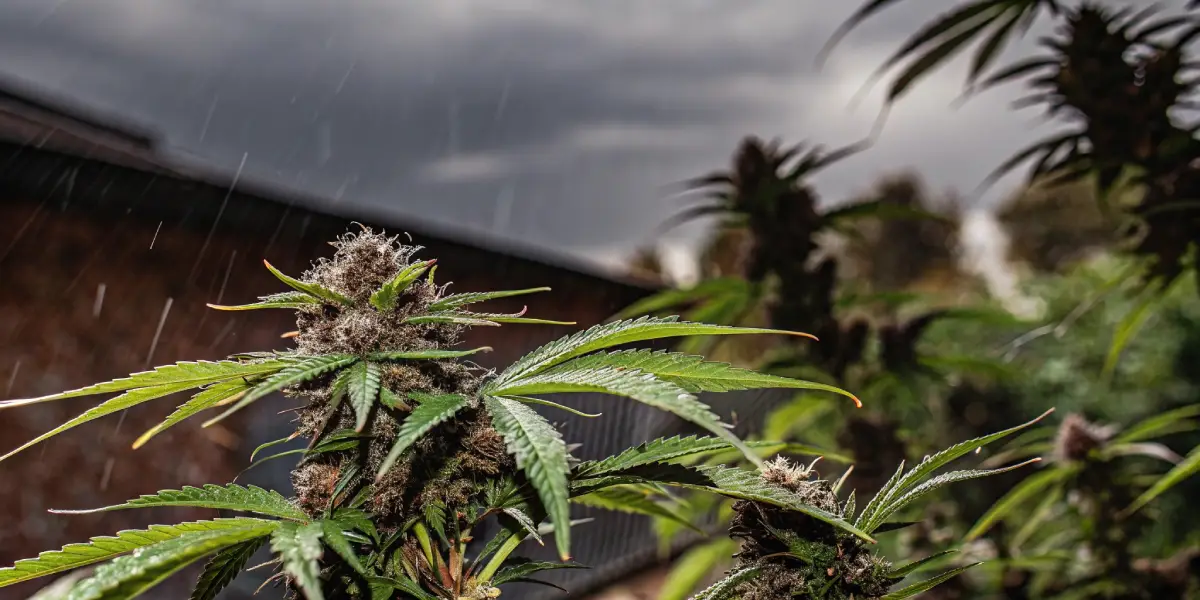
Regular Cleaning and Sanitation Practices to Prevent Bud Rot
Removing Dead Material
Regularly clearing dead leaves and plant debris from your garden helps lower the risk of bud rot. Dead material can harbor moisture and fungi, making it easier for infections to spread. By keeping your garden clean, you create a healthier environment and reduce the conditions that lead to bud rot. This practice is a fundamental part of how to prevent bud rot outdoors and ensures that your plants have more room to breathe and grow.
Routine removal of waste also makes monitoring for early signs of bud rot easier. When the garden is well-maintained, any changes in plant health are more noticeable. A clean environment supports better overall plant performance and minimizes fungal risks. Taking time to remove dead material is a simple, effective method on how to prevent bud rot outdoors and maintain a thriving garden.
Sanitizing Tools and Surfaces
Cleaning and sanitizing your gardening tools and work surfaces is essential to prevent the spread of fungal spores. Tools used in trimming or pruning can carry pathogens from one plant to another if not disinfected. Regular sanitization forms part of a solid plan on how to prevent bud rot outdoors. Using solutions like diluted bleach or alcohol helps ensure that every cut and adjustment is made safely without transferring harmful agents.
Keeping tools clean not only protects your plants but also improves the efficiency of your maintenance routines. A sanitized environment reduces the chances of re-infection after treatments and supports a healthy garden ecosystem. Adopting strict cleaning practices is a reliable way on how to prevent bud rot outdoors and preserve the integrity of your outdoor cannabis crop.
Expert Tips for Long-Term Bud Rot Prevention Outdoors
Maintaining long-term protection against bud rot requires commitment and careful planning. Seasoned growers recommend regular monitoring, detailed record keeping, and adjusting practices based on weather trends. Applying a mix of proper cultural techniques and organic treatments creates a robust system on how to prevent bud rot outdoors. Embrace these expert tips and remain attentive to your garden’s changing needs to ensure your outdoor cannabis remains vigorous, dry, and free from infection throughout every growing season.
FAQs about how to prevent bud rot outdoors
What are the key methods on how to prevent bud rot outdoors?
Using proper spacing, air circulation, and organic treatments are vital methods on how to prevent bud rot outdoors. Regular pruning, sanitation, and timely removal of affected parts further reduce risk. Monitoring weather and soil conditions helps adjust care routines. By combining these practices, gardeners create a safer environment that discourages fungal growth and preserves plant health consistently throughout the season.
How does proper garden layout help in how to prevent bud rot outdoors?
A well-planned garden layout promotes sunlight and airflow, both essential for drying moisture quickly. Arranging plants with ample spacing prevents overcrowding and reduces humidity around buds. This design minimizes areas where fungal spores can thrive, serving as a natural defense on how to prevent bud rot outdoors. Additionally, clearly defined pathways and proper orientation make routine maintenance easier, ensuring any early signs of infection are promptly addressed before spreading.
What role do organic fungicides play in how to prevent bud rot outdoors?
Organic fungicides offer safe, natural protection by creating a barrier against fungal growth without harming beneficial organisms. They work as a supportive measure on how to prevent bud rot outdoors, especially when applied during humid conditions or after heavy rains. Regular use of organic treatments, coupled with proper cultural practices, reduces infection risk. This integrated approach supports overall plant health, making the garden more resilient to environmental stress and fungal threats consistently.


